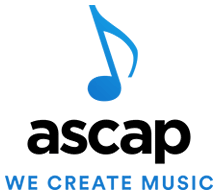 In my previous post I looked at two successful but struggling organizations – one struggling with the implementation of a “manager-less” organizational structure.
In my previous post I looked at two successful but struggling organizations – one struggling with the implementation of a “manager-less” organizational structure.
Implementing change is not easy. Simply announcing the change and “hoping” everyone buys into it rarely works. Let’s look at an organization that is changing fast and well.
Change done really well includes involvement of key stakeholders, alignment by team leaders and team members to the plan, and action – testing new methods and structures to serve better. You’ll see all of those in play in this story.
ASCAP is a 102-year-old member-owned performance rights organization (PRO) which grants performance licenses and collects performance royalties for music publishers and creators. (Full disclosure: I’m an ASCAP member.)
The music industry is undergoing tremendous change. How can a PRO protect and promote members’ works in the digital age?
A year ago, Elizabeth Matthews was hired as the CEO of ASCAP. She and her team are implementing a six-year strategic plan to keep ASCAP relevant in the digital age and evolve to serve their members as effectively as possible. Matthews and her team are aligned, communicating, and moving fast.
One of the most significant and visible changes that ASCAP implemented last year was to make available to the public the percentage shares ASCAP songwriter/publisher members hold in co-written songs and the shares of co-rights holders in those songs. Making such details available amounts to sacrilege in the music industry, yet it is the right thing to do.
Matthews said that ASCAP’s goal is to ensure “people in the outside world know exactly what rights are available for licensing and our membership has confidence that they understand the rules in place under which they get paid.”
ASCAP’s evolution has been in the works since 2013. A team of outside consultants worked with ASCAP for a year to help develop their plan for the future. To learn what key stakeholders thought, interviews were conducted with the licensee (user) community, foreign performance rights organizations, music publishers, and music creators. In December 2014 the ASCAP board approved the six-year transformation plan. Matthews was appointed CEO the next month.
Within weeks, Matthews set up a transformation management office with a key executive and a talented team driving the process. At the same time, executive leadership was evolving. Some retired, some accepted new offers. This can have a negative impact on a change initiative – yet Matthews saw the silver lining. “As a not-for-profit membership organization with a key mission to drive advocacy, education, and a community for creators, people who work here . . . think of it almost as a calling,” she explained. “The hardest thing to drive in a change management situation is alignment of employees around purpose. Luckily I have that here!”
Her senior leadership team now includes executives from the music industry, from the startup environment, from technology, from investment banking, and more. She knew this team needed a wide range of experiences. If she could rally them together, they’d be focused on innovation (in a 100-year-old industry!).
There’s a new chief of strategy and a new product team to help develop initiatives around data tools, analytics, automation, and forecasting. New technology will help licensees, publishers, and creators understand and leverage more information, effectively. A licensee, publisher, or creator will “be able to find the information they’re looking for 24/7.”
Matthews notes, “By charter, ASCAP is here to protect creators’ rights. We’re owned by them. You can work at a lot of cool places that are about big data – but we’re big data with a heart.”
This is how you implement change – by involving all players, by engaging all leaders in the transformation, by testing new ideas quickly, and by investing in purpose, productivity, and passion.
What’s the most effective change initiative you’ve experienced in your career? What did leaders do to engage, inform, and involve you? Share your insights on Twitter, Facebook, and LinkedIn.
ASCAP logo © ASCAP. All rights reserved.
![]() Podcast – Listen to this post now with the player below. Subscribe via RSS or iTunes.
Podcast – Listen to this post now with the player below. Subscribe via RSS or iTunes.
The music heard on my podcasts is from one of my songs, “Heartfelt,” copyright © 2005-2016 Chris Edmonds Music (ASCAP). I played all instruments, recorded all tracks, and mastered the final product for your listening pleasure.



